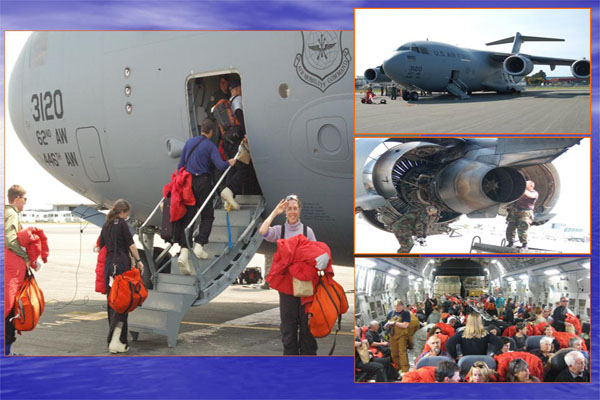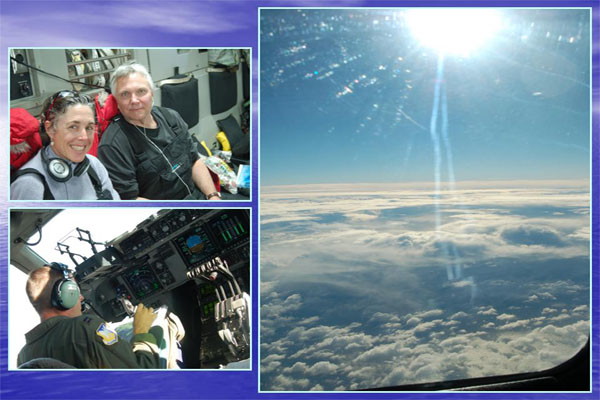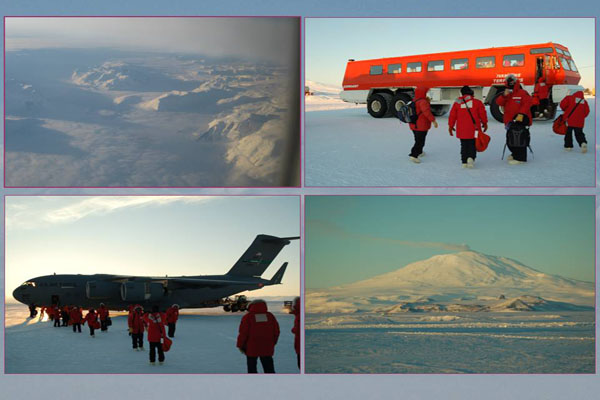
Image courtesy of Sally Walker | ||||
| ||||
You might also be interested in:

Traveling Nitrogen Classroom Activity Kit
Check out our online store - minerals, fossils, books, activities, jewelry, and household items!...more
Antarctica
Antarctica is unique. It is the coldest, windiest, and driest continent on Earth. The land is barren and mostly covered with a thick sheet of ice. Antarctica is almost entirely south of the Antarctic Circle...more
Christchurch, New Zealand
Landing in Christchurch, New Zealand, one of the world's windiest airports, is unforgettable. Snowcapped Southern Alps, braided streams criss-cross the landscape amidst a patchwork quilt of green pastures,...more
Clothing Distribution Center, United States Antarctic Program
I live near Atlanta, Georgia, where "CDC" means the Center for Disease Control. In Christchurch, "CDC" means the Clothing Distribution Center for the United States Antarctic Program. At this Center, workers...more
Boarding U.S. Airforce C-17 Globemaster III
Finally the fax arrived that weather conditions in Antarctica had improved dramatically, and our flight was scheduled for noon on October 10. On that day, we hurried to the CDC, donned our Extreme Cold...more
Flight over Southern Ocean
With the brakes retooled, we were finally ready for take off in the C-17. Take off was amazing, despite all the noise generated by the massive engines (we had to wear ear plugs or headphones): I was pushed...more
Arrival on Ross Island, Antarctica
About an hour before we were scheduled to land, we started descending and the weather was clear. We next spotted the snow-and-ice covered Transantarctic Mountains (TAM), and our spirits lifted: we were...more
McMurdo Station, Ross Island, Antarctica
McMurdo Station in Antarctica gives one the impression of an impermanent, transient establishment nestled at the base of volcanic cinder cones, an isolated ice civilization at the edge of the unknown....morePlease log in
Science Blogs
Real Climate: climate science from climate scientists

Windows to the Universe, a project of the National Earth Science Teachers Association, is sponsored in part is sponsored in part through grants from federal agencies (NASA and NOAA), and partnerships with affiliated organizations, including the American Geophysical Union, the Howard Hughes Medical Institute, the Earth System Information Partnership, the American Meteorological Society, the National Center for Science Education, and TERC. The American Geophysical Union and the American Geosciences Institute are Windows to the Universe Founding Partners. NESTA welcomes new Institutional Affiliates in support of our ongoing programs, as well as collaborations on new projects. Contact NESTA for more information.




